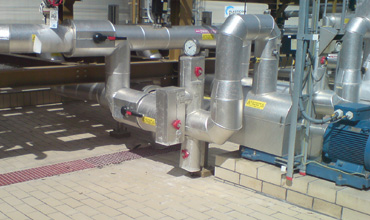The acidproof construction as part of the surface protection provides a permanent protection towards aggressive media. By the application of suitable materials it serves on the one hand for maintaining the value of industrial plants and on the other hand for protecting the environment and the nature.
Typical application fields of the classic acidproof construction can be found in the area of processing plants of our customers. In this case chemical-resistant and liquid-tight coats, the so-called sealing layers, are applied onto the surface of the object (component).
Since the surface condition of the constructions to be protected has important influence on the quality and on the shelf life of the complete acidproof protection, high demands are to be made on the substrate. The following regulations are beside others decisive:
- DIN EN 14879-1
- DIN 28052-1
- DIN 28060 - 28062
- AGI Arbeitsblätter S10, S20, S30
As additional protection against mechanical and thermal stresses, bricks and tiles mainly made of acidproof ceramic, carbon or cast basalt depending on the stress are applied as so-called combination coatings in composite construction with the sealings. They are either completely layed and pressed into the first applied mortar or first laid onto the substrate and the joints are subsequently filled with elutriation mortar by using high resistant synthetic resins.
The choice and the application of these materials require excellent know-how. If you are interested you can also ask for corresponding reference objects.
Typical areas for the acidproof construction:
- collecting spaces for chemicals
- sloped surfaces, channels, ducts, pump sumps, pipes
- storage and reaction tanks
- scrubbers
- flue gas ducts
- industrial floors
- picklings
Synthetic resin systems in the acidproof construction:
Epoxy resins, polyester resins, vinyl resins, polyurethane resins, furan and phenolic resins.
Rubber lining materials (sheet systems):
Natural rubber, butyl rubber, bromobutyl and chlorbutyl rubber.


